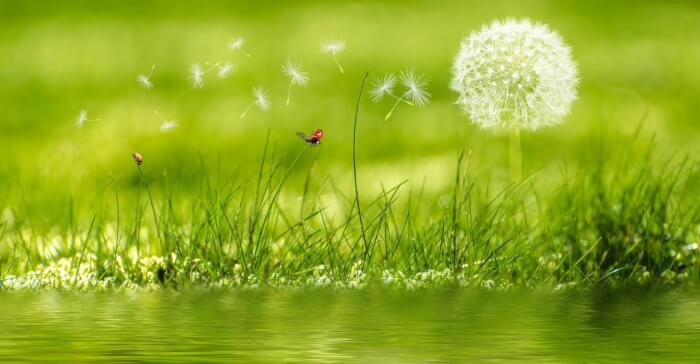It might seem like your lawn isn’t growing during the winter season, but this is far from the truth. What your lawn does in the colder months is determined by how you maintain it throughout the rest of the year. Equally so, how you care for the grass in the winter months will impact what it looks like during other seasons.
During winter, your lawn will be subjected to cold winds and icy dew, especially if you live in a snowy region of the U.S., so you should already have your garden maintenance plans in check before the temperature drops.
These are the best and most simplified methods to keep your lawn looking healthy this coming winter.
Remove Weeds
Weeds in your grass are not only unsightly, but they also kill any healthy grass. Weeds are relentless and won’t stop growing until you rip them out at the roots. Most weeds also have seeds that will drop on the ground to promote germination as you pull them out. The problem is that if you don’t regularly de-weed, your grass won’t receive the nutrients it needs to grow.
Over time, weeds can take over a garden completely if you are not careful. Some other plants that look pretty are also considered weeds. They take over the roots of healthy grass and will continue to damage any green blades you have until there is nothing left.
Replace Damaged Turf
Turf, sometimes also referred to as sod, are sheets of grass that still have the roots attached. It comes with a bit of soil that can integrate with any lawn, and it will grow as though it came from the very same ground. The best time to replace damaged turf is during the summer months; however, there are ways to get around this.
With the right sod and seedings, and proper irrigation, you can have luscious green turf growing during the coldest temperatures. You can find out more about Seeding + Sodding by R and L Irrigation since every lawn is different. Based on the soil and landscape, your lawn may need specialized treatment. R and L Irrigation can provide you with custom sod and seedings to revive any lawn, no matter how damaged it is. You can also find great guides on their website with more tips and tricks to maintain your lawn during all the seasons.
Prepare for Seeding Transplantation
Throughout the year, different trees and plants will drop debris on the ground. As these bits fall, they gather up into a thick layer on the ground. When this layer is too bushy though, it makes it difficult for the grass underneath to grow. Simply raking your lawn to stir the surface soil every two or so weeks removes the dead and rotting debris so that new seeds can root in the ground.
Clearing your lawn like this also helps to stimulate the roots of the grass so that it grows and continues to flourish. If the lawn under the leaves starts to thin out over the months, it’s a sign that your grass is dying. One way to get around this is to turn the soil several times every few months on top of raking the lawn. This will release the nutrients that are trapped on top of the grass, back into the soil.
Be Generous with Fertilizer
Lawn fertilizers contain vital nutrients and vitamins that help the grass grow. Various fertilizers can also be used as an effective bug control method. It’s best to put too much on than too little. Aim for a minimum of 10 lbs. per every 1,000 square feet of lawn. You’ll need a spreader with a rotary motor that will shoot out little pellets or granules into the grass.
Keep the lawn moist by watering it for at least two weeks. This will promote the germination of the seeds. Depending on the size of your lawn, it may require watering up to three times a day. Just be careful not to overwater and drown the seeds. If you see puddles in the grass, you’ve overdone it.
Don’t Mow Wet Grass
Mowing your lawn often is good to keep it growing strong and healthy. It’s the same principle as trimming the split ends from your hair. Without it, the grass will start to become matted, and it will be harder to mow.
Anytime the lawn is moist, you must refrain from mowing it. If the roots are soft, you will risk pulling the roots out altogether when you mow. Then you will just be left will random patches where there is no grass at all. If the roots die, you will need to plant some turf to cover it up.
During winter, grass will naturally be damaged by the elements, but you can avoid this with the right care and maintenance. With these methods in place, you can plan for winter and keep your lawn looking vibrant even as the snow starts to fall.








